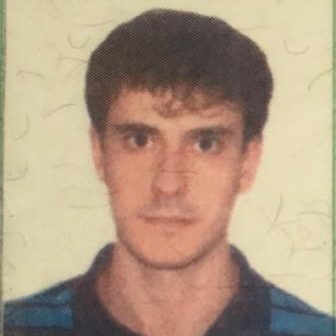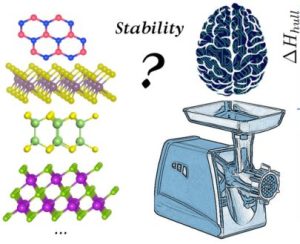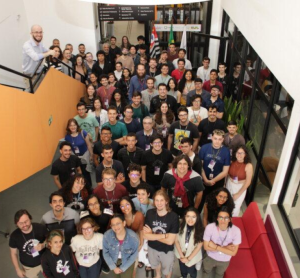
Publicações de Gabriel Schleder
Zanineli, Pedro H. M.; Monteiro, Matheus Zaia; Wasques, Vinicius Francisco; Simões, Francielle Santo Pedro; Schleder, Gabriel R. Fuzzy Neural Network Performance and Interpretability of Quantum Wavefunction Probability Predictions Miscellaneous 2025. Resumo | Links | BibTeX | Tags: Focassio, Bruno; Freitas, Luis Paulo M.; Schleder, Gabriel R. Performance Assessment of Universal Machine Learning Interatomic Potentials: Challenges and Directions for Materials’ Surfaces Journal Article Em: ACS Applied Materials & Interfaces, vol. 0, não 0, pp. null, 2024, (PMID: 38990833). Resumo | Links | BibTeX | Tags: Fiuza, Tanna E. R.; Focassio, Bruno; Bettini, Jefferson; Schleder, Gabriel R.; Rodrigues, Murillo H. M.; Junior, João B. Souza; Fazzio, Adalberto; Capaz, Rodrigo B.; Leite, Edson R. Visualization of electron beam-induced desintering of nanostructured ceramics at the atomic scale Journal Article Em: Cell Reports Physical Science, pp. 101828, 2024, ISSN: 2666-3864. Resumo | Links | BibTeX | Tags: atom mobility, ceramics, desintering, HRTEM, thin films, ZrO Focassio, Bruno; Schleder, Gabriel R.; Fazzio, Adalberto; Capaz, Rodrigo B.; Lopes, Pedro V.; Ferreira, Jaime; Enderlein, Carsten; Neto, Marcello B. Silva Magnetic control of Weyl nodes and wave packets in three-dimensional warped semimetals Working paper 2024. Resumo | Links | BibTeX | Tags: Focassio, Bruno; Freitas, Luis Paulo Mezzina; Schleder, Gabriel R. Performance Assessment of Universal Machine Learning Interatomic Potentials: Challenges and Directions for Materials’ Surfaces Working paper 2024. Resumo | Links | BibTeX | Tags: Lelis, Gabrielle Coelho; Fonseca, Wilson Tiago; Lima, Alessandro Henrique; Okazaki, Anderson Kenji; Figueiredo, Eduardo Costa; Jr, Antonio Riul; Schleder, Gabriel R.; Samorì, Paolo; Oliveira, Rafael Furlan Em: ACS Applied Materials & Interfaces, vol. 0, não 0, pp. null, 2023, (PMID: 38134415). Resumo | Links | BibTeX | Tags: Barcelos, Ingrid D.; de Oliveira, Raphaela; Schleder, Gabriel R.; Matos, Matheus J. S.; Longuinhos, Raphael; Ribeiro-Soares, Jenaina; Barboza, Ana Paula M.; Prado, Mariana C.; Pinto, Elisângela S.; Gobato, Yara Galvão; Chacham, Hélio; Neves, Bernardo R. A.; Cadore, Alisson R. Phyllosilicates as earth-abundant layered materials for electronics and optoelectronics: Prospects and challenges in their ultrathin limit Journal Article Em: vol. 134, não 9, 2023, ISSN: 1089-7550. Resumo | Links | BibTeX | Tags: General Physics and Astronomy Morales-Durán, Nicolás; Wang, Jie; Schleder, Gabriel R.; Angeli, Mattia; Zhu, Ziyan; Kaxiras, Efthimios; Repellin, Cécile; Cano, Jennifer Pressure-enhanced fractional Chern insulators along a magic line in moiré transition metal dichalcogenides Journal Article Em: Phys. Rev. Res., vol. 5, iss. 3, pp. L032022, 2023. Claro, Pedro I. C.; Borges, Egon P. B. S.; Schleder, Gabriel R.; Archilha, Nathaly L.; Pinto, Allan; Carvalho, Murilo; Driemeier, Carlos E.; Fazzio, Adalberto; Gouveia, Rubia F. From micro- to nano- and time-resolved x-ray computed tomography: Bio-based applications, synchrotron capabilities, and data-driven processing Journal Article Em: vol. 10, não 2, 2023, ISSN: 1931-9401. Resumo | Links | BibTeX | Tags: General Physics and Astronomy Costa, Marcio; Focassio, Bruno; Canonico, Luis M.; Cysne, Tarik P.; Schleder, Gabriel R.; Muniz, R. B.; Fazzio, Adalberto; Rappoport, Tatiana G. Connecting Higher-Order Topology with the Orbital Hall Effect in Monolayers of Transition Metal Dichalcogenides Journal Article Em: Phys. Rev. Lett., vol. 130, iss. 11, pp. 116204, 2023. Hsieh, Valerie; Halbertal, Dorri; Finney, Nathan R.; Zhu, Ziyan; Gerber, Eli; Pizzochero, Michele; Kucukbenli, Emine; Schleder, Gabriel R.; Angeli, Mattia; Watanabe, Kenji; Taniguchi, Takashi; Kim, Eun-Ah; Kaxiras, Efthimios; Hone, James; Dean, Cory R.; Basov, D. N. Domain-Dependent Surface Adhesion in Twisted Few-Layer Graphene: Platform for Moiré-Assisted Chemistry Journal Article Em: Nano Letters, vol. 23, não 8, pp. 3137-3143, 2023, (PMID: 37036942). Resumo | Links | BibTeX | Tags: Nicoliche, Caroline Y. N.; Silva, Giulia S.; Gomes-de-Pontes, Leticia; Schleder, Gabriel R.; Lima, Renato S. Em: Garcia-Cordero, Jose L.; Revzin, Alexander (Ed.): Microfluidic Systems for Cancer Diagnosis, pp. 83–94, Springer US, New York, NY, 2023, ISBN: 978-1-0716-3271-0. Resumo | Links | BibTeX | Tags: Li, Zhijie; Tabataba-Vakili, Farsane; Zhao, Shen; Rupp, Anna; Bilgin, Ismail; Herdegen, Ziria; März, Benjamin; Watanabe, Kenji; Taniguchi, Takashi; Schleder, Gabriel R.; Baimuratov, Anvar S.; Kaxiras, Efthimios; Müller-Caspary, Knut; Högele, Alexander Lattice Reconstruction in MoSe2–WSe2 Heterobilayers Synthesized by Chemical Vapor Deposition Journal Article Em: Nano Letters, vol. 23, não 10, pp. 4160-4166, 2023, (PMID: 37141148). Resumo | Links | BibTeX | Tags: Morales-Durán, Nicolás; Wang, Jie; Schleder, Gabriel R.; Angeli, Mattia; Zhu, Ziyan; Kaxiras, Efthimios; Repellin, Cécile; Cano, Jennifer Pressure–enhanced fractional Chern insulators in moiré transition metal dichalcogenides along a magic line Working paper 2023. Resumo | Links | BibTeX | Tags: Schleder, Gabriel R.; Pizzochero, Michele; Kaxiras, Efthimios One-Dimensional Moiré Physics and Chemistry in Heterostrained Bilayer Graphene Working paper 2023. Resumo | Links | BibTeX | Tags: 2025
@misc{zanineli2025fuzzyneuralnetworkperformance,
title = {Fuzzy Neural Network Performance and Interpretability of Quantum Wavefunction Probability Predictions},
author = {Pedro H. M. Zanineli and Matheus Zaia Monteiro and Vinicius Francisco Wasques and Francielle Santo Pedro Simões and Gabriel R. Schleder},
url = {https://arxiv.org/abs/2511.05261},
year = {2025},
date = {2025-11-07},
urldate = {2025-01-01},
abstract = {Predicting quantum wavefunction probability distributions is crucial for computational chemistry and materials science, yet machine learning (ML) models often face a trade-off between accuracy and interpretability. This study compares Artificial Neural Networks (ANNs) and Adaptive Neuro-Fuzzy Inference Systems (ANFIS) in modeling quantum probability distributions for the H ion, leveraging data generated via Physics-Informed Neural Networks (PINNs). While ANN achieved superior accuracy (R = 0.99 vs ANFIS's 0.95 with Gaussian membership functions), it required over 50x more parameters (2,305 vs 39-45). ANFIS, however, provided unique interpretability: its Gaussian membership functions encoded spatial electron localization near proton positions (), mirroring Born probability densities, while fuzzy rules reflected quantum superposition principles. Rules prioritizing the internuclear direction revealed the system's 1D symmetry, aligning with Linear Combination of Atomic Orbitals theory--a novel data-driven perspective on orbital hybridization. Membership function variances () further quantified electron delocalization trends, and peak prediction errors highlighted unresolved quantum cusps. The choice of functions critically impacted performance: Gaussian/Generalized Bell outperformed Sigmoid, with errors improving as training data increased, showing scalability. This study underscores the context-dependent value of ML: ANN for precision and ANFIS for interpretable, parameter-efficient approximations that link inputs to physical behavior. These findings advocate hybrid approaches in quantum simulations, balancing accuracy with explainability to accelerate discovery. Future work should extend ANFIS to multi-electron systems and integrate domain-specific constraints (e.g., kinetic energy terms), bridging data-driven models and fundamental physics.},
keywords = {},
pubstate = {published},
tppubtype = {misc}
}
2024
@article{doi:10.1021/acsami.4c03815,
title = {Performance Assessment of Universal Machine Learning Interatomic Potentials: Challenges and Directions for Materials’ Surfaces},
author = {Bruno Focassio and Luis Paulo M. Freitas and Gabriel R. Schleder},
url = {https://doi.org/10.1021/acsami.4c03815},
doi = {10.1021/acsami.4c03815},
year = {2024},
date = {2024-07-11},
journal = {ACS Applied Materials & Interfaces},
volume = {0},
number = {0},
pages = {null},
abstract = {Machine learning interatomic potentials (MLIPs) are one of the main techniques in the materials science toolbox, able to bridge ab initio accuracy with the computational efficiency of classical force fields. This allows simulations ranging from atoms, molecules, and biosystems, to solid and bulk materials, surfaces, nanomaterials, and their interfaces and complex interactions. A recent class of advanced MLIPs, which use equivariant representations and deep graph neural networks, is known as universal models. These models are proposed as foundation models suitable for any system, covering most elements from the periodic table. Current universal MLIPs (UIPs) have been trained with the largest consistent data set available nowadays. However, these are composed mostly of bulk materials’ DFT calculations. In this article, we assess the universality of all openly available UIPs, namely MACE, CHGNet, and M3GNet, in a representative task of generalization: calculation of surface energies. We find that the out-of-the-box foundation models have significant shortcomings in this task, with errors correlated to the total energy of surface simulations, having an out-of-domain distance from the training data set. Our results show that while UIPs are an efficient starting point for fine-tuning specialized models, we envision the potential of increasing the coverage of the materials space toward universal training data sets for MLIPs.},
note = {PMID: 38990833},
keywords = {},
pubstate = {published},
tppubtype = {article}
}
@article{FIUZA2024101828,
title = {Visualization of electron beam-induced desintering of nanostructured ceramics at the atomic scale},
author = {Tanna E. R. Fiuza and Bruno Focassio and Jefferson Bettini and Gabriel R. Schleder and Murillo H. M. Rodrigues and João B. Souza Junior and Adalberto Fazzio and Rodrigo B. Capaz and Edson R. Leite},
url = {https://www.sciencedirect.com/science/article/pii/S2666386424000535},
doi = {https://doi.org/10.1016/j.xcrp.2024.101828},
issn = {2666-3864},
year = {2024},
date = {2024-02-12},
urldate = {2024-01-01},
journal = {Cell Reports Physical Science},
pages = {101828},
abstract = {Summary
Mass diffusion and local tensile stress associated with electron beam irradiation can favor the desintering process. Here, we report the electron beam-induced desintering of ZrO2 thin films at the atomic scale with unprecedented spatial resolution using high-resolution transmission electron microscopy (HRTEM). Our results confirm earlier works in which desintering is driven by tensile stress acting on the bridge if an external stimulus, such as irradiation, triggers atom mobility. Additionally, we find departures from classical microscopic descriptions: a very stable nanobridge is formed and evolves until rupture with a constant dihedral angle instead of a brittle rupture. An adapted model for desintering at the nanoscale is proposed using the experimental findings. This work provides insights that may improve the knowledge of the rupture of ceramic materials at the nano and atomic scales, contributing to a better knowledge of materials’ behavior.},
keywords = {atom mobility, ceramics, desintering, HRTEM, thin films, ZrO},
pubstate = {published},
tppubtype = {article}
}
Mass diffusion and local tensile stress associated with electron beam irradiation can favor the desintering process. Here, we report the electron beam-induced desintering of ZrO2 thin films at the atomic scale with unprecedented spatial resolution using high-resolution transmission electron microscopy (HRTEM). Our results confirm earlier works in which desintering is driven by tensile stress acting on the bridge if an external stimulus, such as irradiation, triggers atom mobility. Additionally, we find departures from classical microscopic descriptions: a very stable nanobridge is formed and evolves until rupture with a constant dihedral angle instead of a brittle rupture. An adapted model for desintering at the nanoscale is proposed using the experimental findings. This work provides insights that may improve the knowledge of the rupture of ceramic materials at the nano and atomic scales, contributing to a better knowledge of materials’ behavior.@workingpaper{focassio2024magnetic,
title = {Magnetic control of Weyl nodes and wave packets in three-dimensional warped semimetals},
author = {Bruno Focassio and Gabriel R. Schleder and Adalberto Fazzio and Rodrigo B. Capaz and Pedro V. Lopes and Jaime Ferreira and Carsten Enderlein and Marcello B. Silva Neto},
url = {https://arxiv.org/abs/2401.06282},
doi = { https://doi.org/10.48550/arXiv.2401.06282},
year = {2024},
date = {2024-01-11},
urldate = {2024-01-01},
abstract = {We investigate the topological phase transitions driven by band warping and a transverse magnetic field, for three-dimensional Weyl semimetals. First, we use the Chern number as a mathematical tool to derive the topological phase diagram. Next, we associate each of the topological sectors to a given angular momentum state of a rotating wave packet. Then we show how the position of the Weyl nodes can be manipulated by a transverse external magnetic field that ultimately quenches the wave packet rotation, first partially and then completely, thus resulting in a sequence of field-induced topological phase transitions. Finally, we calculate the current-induced magnetization and the anomalous Hall conductivity of a prototypical warped Weyl material. Both observables reflect the topological transitions associated with the wave packet rotation and can help to identify the elusive 3D quantum anomalous Hall effect in three-dimensional, warped Weyl materials.},
keywords = {},
pubstate = {published},
tppubtype = {workingpaper}
}
@workingpaper{focassio2024performance,
title = {Performance Assessment of Universal Machine Learning Interatomic Potentials: Challenges and Directions for Materials' Surfaces},
author = {Bruno Focassio and Luis Paulo Mezzina Freitas and Gabriel R. Schleder},
url = {https://arxiv.org/abs/2403.04217},
doi = {10.48550/arXiv.2403.04217},
year = {2024},
date = {2024-01-01},
urldate = {2024-01-01},
abstract = {Machine learning interatomic potentials (MLIPs) are one of the main techniques in the materials science toolbox, able to bridge ab initio accuracy with the computational efficiency of classical force fields. This allows simulations ranging from atoms, molecules, and biosystems, to solid and bulk materials, surfaces, nanomaterials, and their interfaces and complex interactions. A recent class of advanced MLIPs, which use equivariant representations and deep graph neural networks, is known as universal models. These models are proposed as foundational models suitable for any system, covering most elements from the periodic table. Current universal MLIPs (UIPs) have been trained with the largest consistent dataset available nowadays. However, these are composed mostly of bulk materials' DFT calculations. In this article, we assess the universality of all openly available UIPs, namely MACE, CHGNet, and M3GNet, in a representative task of generalization: calculation of surface energies. We find that the out-of-the-box foundational models have significant shortcomings in this task, with errors correlated to the total energy of surface simulations, having an out-of-domain distance from the training dataset. Our results show that while UIPs are an efficient starting point for fine-tuning specialized models, we envision the potential of increasing the coverage of the materials space towards universal training datasets for MLIPs.},
keywords = {},
pubstate = {published},
tppubtype = {workingpaper}
}
2023
@article{doi:10.1021/acsami.3c16699,
title = {Harnessing Small-Molecule Analyte Detection in Complex Media: Combining Molecularly Imprinted Polymers, Electrolytic Transistors, and Machine Learning},
author = {Gabrielle Coelho Lelis and Wilson Tiago Fonseca and Alessandro Henrique Lima and Anderson Kenji Okazaki and Eduardo Costa Figueiredo and Antonio Riul Jr and Gabriel R. Schleder and Paolo Samorì and Rafael Furlan Oliveira},
url = {https://doi.org/10.1021/acsami.3c16699},
doi = {10.1021/acsami.3c16699},
year = {2023},
date = {2023-12-22},
journal = {ACS Applied Materials & Interfaces},
volume = {0},
number = {0},
pages = {null},
abstract = {Small-molecule analyte detection is key for improving quality of life, particularly in health monitoring through the early detection of diseases. However, detecting specific markers in complex multicomponent media using devices compatible with point-of-care (PoC) technologies is still a major challenge. Here, we introduce a novel approach that combines molecularly imprinted polymers (MIPs), electrolyte-gated transistors (EGTs) based on 2D materials, and machine learning (ML) to detect hippuric acid (HA) in artificial urine, being a critical marker for toluene intoxication, parasitic infections, and kidney and bowel inflammation. Reduced graphene oxide (rGO) was used as the sensory material and molecularly imprinted polymer (MIP) as supramolecular receptors. Employing supervised ML techniques based on symbolic regression and compressive sensing enabled us to comprehensively analyze the EGT transfer curves, eliminating the need for arbitrary signal selection and allowing a multivariate analysis during HA detection. The resulting device displayed simultaneously low operating voltages (<0.5 V), rapid response times (≤10 s), operation across a wide range of HA concentrations (from 0.05 to 200 nmol L–1), and a low limit of detection (LoD) of 39 pmol L–1. Thanks to the ML multivariate analysis, we achieved a 2.5-fold increase in the device sensitivity (1.007 μA/nmol L–1) with respect to the human data analysis (0.388 μA/nmol L–1). Our method represents a major advance in PoC technologies, by enabling the accurate determination of small-molecule markers in complex media via the combination of ML analysis, supramolecular analyte recognition, and electrolytic transistors.},
note = {PMID: 38134415},
keywords = {},
pubstate = {published},
tppubtype = {article}
}
@article{Barcelos2023,
title = {Phyllosilicates as earth-abundant layered materials for electronics and optoelectronics: Prospects and challenges in their ultrathin limit},
author = {Ingrid D. Barcelos and Raphaela de Oliveira and Gabriel R. Schleder and Matheus J. S. Matos and Raphael Longuinhos and Jenaina Ribeiro-Soares and Ana Paula M. Barboza and Mariana C. Prado and Elisângela S. Pinto and Yara Galvão Gobato and Hélio Chacham and Bernardo R. A. Neves and Alisson R. Cadore},
doi = {10.1063/5.0161736},
issn = {1089-7550},
year = {2023},
date = {2023-09-07},
volume = {134},
number = {9},
publisher = {AIP Publishing},
abstract = {
keywords = {General Physics and Astronomy},
pubstate = {published},
tppubtype = {article}
}
@article{PhysRevResearch.5.L032022,
title = {Pressure-enhanced fractional Chern insulators along a magic line in moiré transition metal dichalcogenides},
author = {Nicolás Morales-Durán and Jie Wang and Gabriel R. Schleder and Mattia Angeli and Ziyan Zhu and Efthimios Kaxiras and Cécile Repellin and Jennifer Cano},
url = {https://link.aps.org/doi/10.1103/PhysRevResearch.5.L032022},
doi = {10.1103/PhysRevResearch.5.L032022},
year = {2023},
date = {2023-08-01},
journal = {Phys. Rev. Res.},
volume = {5},
issue = {3},
pages = {L032022},
publisher = {American Physical Society},
keywords = {},
pubstate = {published},
tppubtype = {article}
}
@article{Claro2023,
title = {From micro- to nano- and time-resolved x-ray computed tomography: Bio-based applications, synchrotron capabilities, and data-driven processing},
author = {Pedro I. C. Claro and Egon P. B. S. Borges and Gabriel R. Schleder and Nathaly L. Archilha and Allan Pinto and Murilo Carvalho and Carlos E. Driemeier and Adalberto Fazzio and Rubia F. Gouveia},
doi = {10.1063/5.0129324},
issn = {1931-9401},
year = {2023},
date = {2023-06-01},
volume = {10},
number = {2},
publisher = {AIP Publishing},
abstract = {
keywords = {General Physics and Astronomy},
pubstate = {published},
tppubtype = {article}
}
@article{PhysRevLett.130.116204,
title = {Connecting Higher-Order Topology with the Orbital Hall Effect in Monolayers of Transition Metal Dichalcogenides},
author = {Marcio Costa and Bruno Focassio and Luis M. Canonico and Tarik P. Cysne and Gabriel R. Schleder and R. B. Muniz and Adalberto Fazzio and Tatiana G. Rappoport},
url = {https://link.aps.org/doi/10.1103/PhysRevLett.130.116204},
doi = {10.1103/PhysRevLett.130.116204},
year = {2023},
date = {2023-03-01},
journal = {Phys. Rev. Lett.},
volume = {130},
issue = {11},
pages = {116204},
publisher = {American Physical Society},
keywords = {},
pubstate = {published},
tppubtype = {article}
}
@article{doi:10.1021/acs.nanolett.2c04137,
title = {Domain-Dependent Surface Adhesion in Twisted Few-Layer Graphene: Platform for Moiré-Assisted Chemistry},
author = {Valerie Hsieh and Dorri Halbertal and Nathan R. Finney and Ziyan Zhu and Eli Gerber and Michele Pizzochero and Emine Kucukbenli and Gabriel R. Schleder and Mattia Angeli and Kenji Watanabe and Takashi Taniguchi and Eun-Ah Kim and Efthimios Kaxiras and James Hone and Cory R. Dean and D. N. Basov},
url = {https://doi.org/10.1021/acs.nanolett.2c04137},
doi = {10.1021/acs.nanolett.2c04137},
year = {2023},
date = {2023-01-01},
journal = {Nano Letters},
volume = {23},
number = {8},
pages = {3137-3143},
abstract = {Twisted van der Waals multilayers are widely regarded as a rich platform to access novel electronic phases thanks to the multiple degrees of freedom available for controlling their electronic and chemical properties. Here, we propose that the stacking domains that form naturally due to the relative twist between successive layers act as an additional ”knob” for controlling the behavior of these systems and report the emergence and engineering of stacking domain-dependent surface chemistry in twisted few-layer graphene. Using mid-infrared near-field optical microscopy and atomic force microscopy, we observe a selective adhesion of metallic nanoparticles and liquid water at the domains with rhombohedral stacking configurations of minimally twisted double bi- and trilayer graphene. Furthermore, we demonstrate that the manipulation of nanoparticles located at certain stacking domains can locally reconfigure the moiré superlattice in their vicinity at the micrometer scale. Our findings establish a new approach to controlling moiré-assisted chemistry and nanoengineering.},
note = {PMID: 37036942},
keywords = {},
pubstate = {published},
tppubtype = {article}
}
@inbook{Nicoliche2023,
title = {Single-Response Electronic Tongue and Machine Learning Enable the Multidetermination of Extracellular Vesicle Biomarkers for Cancer Diagnostics Without Recognition Elements},
author = {Caroline Y. N. Nicoliche and Giulia S. Silva and Leticia Gomes-de-Pontes and Gabriel R. Schleder and Renato S. Lima},
editor = {Jose L. Garcia-Cordero and Alexander Revzin},
url = {https://doi.org/10.1007/978-1-0716-3271-0_6},
doi = {10.1007/978-1-0716-3271-0_6},
isbn = {978-1-0716-3271-0},
year = {2023},
date = {2023-01-01},
booktitle = {Microfluidic Systems for Cancer Diagnosis},
pages = {83–94},
publisher = {Springer US},
address = {New York, NY},
abstract = {Platforms based on impedimetric electronic tongue (nonselective sensor) and machine learning are promising to bring disease screening biosensors into mainstream use toward straightforward, fast, and accurate analyses at the point-of-care, thus contributing to rationalize and decentralize laboratory tests with social and economic impacts being achieved. By combining a low-cost and scalable electronic tongue with machine learning, in this chapter, we describe the simultaneous determination of two extracellular vesicle (EV) biomarkers, i.e., the concentrations of EV and carried proteins, in mice blood with Ehrlich tumor from a single impedance spectrum without using biorecognizing elements. This tumor shows primary features of mammary tumor cells. Pencil HB core electrodes are integrated into polydimethylsiloxane (PDMS) microfluidic chip. The platform shows the highest throughput in comparison with the methods addressed in the literature to determine EV biomarkers.},
keywords = {},
pubstate = {published},
tppubtype = {inbook}
}
@article{doi:10.1021/acs.nanolett.2c05094,
title = {Lattice Reconstruction in MoSe2–WSe2 Heterobilayers Synthesized by Chemical Vapor Deposition},
author = {Zhijie Li and Farsane Tabataba-Vakili and Shen Zhao and Anna Rupp and Ismail Bilgin and Ziria Herdegen and Benjamin März and Kenji Watanabe and Takashi Taniguchi and Gabriel R. Schleder and Anvar S. Baimuratov and Efthimios Kaxiras and Knut Müller-Caspary and Alexander Högele},
url = {https://doi.org/10.1021/acs.nanolett.2c05094},
doi = {10.1021/acs.nanolett.2c05094},
year = {2023},
date = {2023-01-01},
urldate = {2023-01-01},
journal = {Nano Letters},
volume = {23},
number = {10},
pages = {4160-4166},
abstract = {Vertical van der Waals heterostructures of semiconducting transition metal dichalcogenides realize moiré systems with rich correlated electron phases and moiré exciton phenomena. For material combinations with small lattice mismatch and twist angles as in MoSe2–WSe2, however, lattice reconstruction eliminates the canonical moiré pattern and instead gives rise to arrays of periodically reconstructed nanoscale domains and mesoscopically extended areas of one atomic registry. Here, we elucidate the role of atomic reconstruction in MoSe2–WSe2 heterostructures synthesized by chemical vapor deposition. With complementary imaging down to the atomic scale, simulations, and optical spectroscopy methods, we identify the coexistence of moiré-type cores and extended moiré-free regions in heterostacks with parallel and antiparallel alignment. Our work highlights the potential of chemical vapor deposition for applications requiring laterally extended heterosystems of one atomic registry or exciton-confining heterostack arrays.},
note = {PMID: 37141148},
keywords = {},
pubstate = {published},
tppubtype = {article}
}
@workingpaper{moralesdurán2023pressureenhanced,
title = {Pressure–enhanced fractional Chern insulators in moiré transition metal dichalcogenides along a magic line},
author = {Nicolás Morales-Durán and Jie Wang and Gabriel R. Schleder and Mattia Angeli and Ziyan Zhu and Efthimios Kaxiras and Cécile Repellin and Jennifer Cano},
url = {https://arxiv.org/abs/2304.06669},
doi = {10.48550/arXiv.2304.06669},
year = {2023},
date = {2023-01-01},
urldate = {2023-01-01},
abstract = {We show that pressure applied to twisted WSe2 can enhance the many-body gap and region of stability of a fractional Chern insulator at filling ν=1/3. Our results are based on exact diagonalization of a continuum model, whose pressure-dependence is obtained through {it ab initio} methods. We interpret our results in terms of a {it magic line} in the pressure-{it vs}-twist angle phase diagram: along the magic line, the bandwidth of the topmost moiré valence band is minimized while simultaneously its quantum geometry nearly resembles that of an ideal Chern band. We expect our results to generalize to other twisted transition metal dichalcogenide homobilayers.},
keywords = {},
pubstate = {published},
tppubtype = {workingpaper}
}
@workingpaper{schleder2023onedimensional,
title = {One-Dimensional Moiré Physics and Chemistry in Heterostrained Bilayer Graphene},
author = {Gabriel R. Schleder and Michele Pizzochero and Efthimios Kaxiras},
url = {https://arxiv.org/abs/2306.09799},
doi = {10.48550/arXiv.2306.09},
year = {2023},
date = {2023-01-01},
urldate = {2023-01-01},
abstract = {Twisted bilayer graphene (tBLG) has emerged as a promising platform to explore exotic electronic phases. However, the formation of moiré patterns in tBLG has thus far been confined to the introduction of twist angles between the layers. Here, we propose heterostrained bilayer graphene (hBLG), as an alternative avenue to access twist-angle-free moiré physics via lattice mismatch. Using atomistic and first-principles calculations, we demonstrate that uniaxial heterostrain can promote isolated flat electronic bands around the Fermi level. Furthermore, the heterostrain-induced out-of-plane lattice relaxation may lead to a spatially modulated reactivity of the surface layer, paving the way for the moiré-driven chemistry and magnetism. We anticipate that our findings can be readily generalized to other layered materials.},
keywords = {},
pubstate = {published},
tppubtype = {workingpaper}
}
Destaques de Gabriel Schleder
Orientados e Supervisionados por Gabriel Schleder

Luis Paulo Mezzina Freitas
Vínculo: Pós-Doutorado
Instituição: Centro Nacional de Pesquisa em Energia e Materiais (CNPEM)
Laboratório: LNNano
Projeto: Simulações de Propriedades Estruturais de Nanomateriais usando Redes Neurais de Grafos E(3)-Equivariantes. (CNPq)




